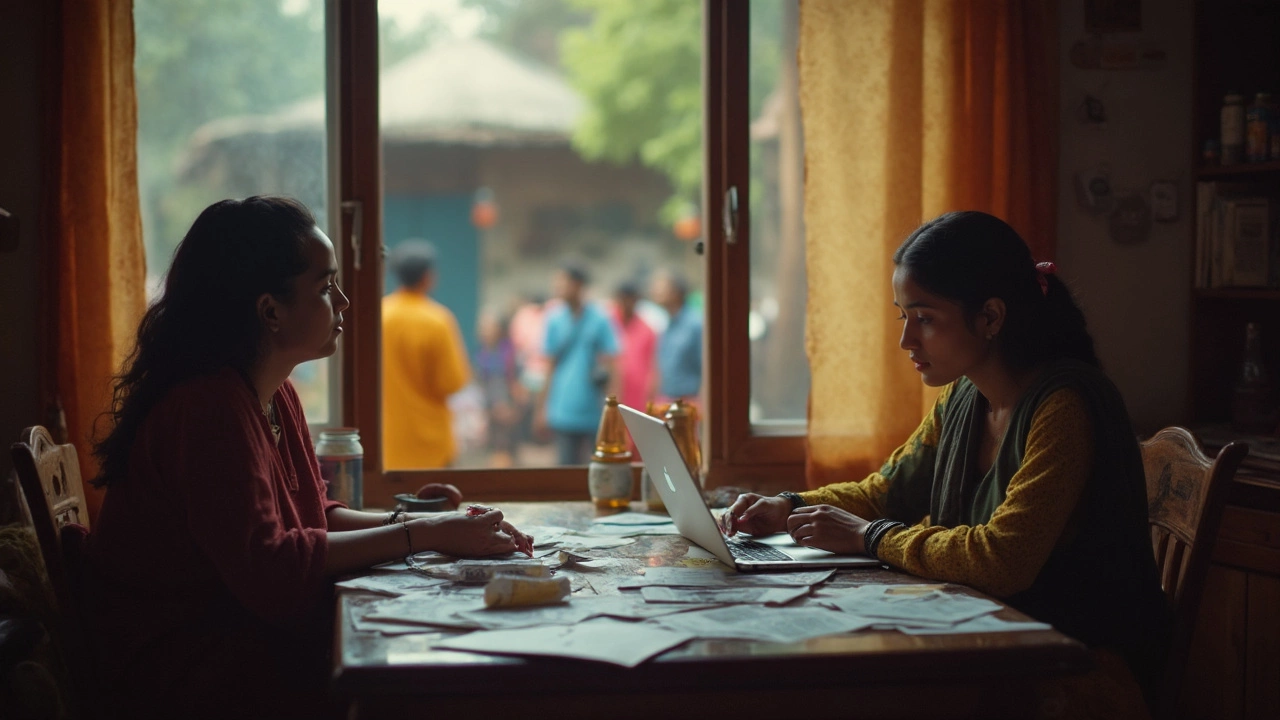It’s easy to say everyone should volunteer, but have you noticed how some folks react almost defensively when you bring it up? Ask around, and you’ll hear everything from “I don’t have time” to “Why would I work for free?” For many people, the idea of volunteering feels out of reach—or just not worth it—no matter how much good it might do.
That feeling isn’t just about laziness or being selfish. There are honest reasons some people turn away from volunteering, and it’s not all about not caring. Think about your own week: most people juggle jobs, family drama, and just keeping the lights on. Where’s that “extra time” supposed to come from? Toss in other factors like bad volunteer experiences, the cringe of being patronized, or even simple fear of not fitting in, and suddenly volunteering feels way more complicated.
- The Stigma and Stereotypes Around Volunteering
- Money, Bills, and Time: The Hard Truth
- Negative Experiences and Burnout
- Cultural and Social Barriers
- Bridging the Gap: Tips for Making Volunteering Appealing
The Stigma and Stereotypes Around Volunteering
Let’s be honest—bringing up volunteering sometimes gets you an awkward look, like you just asked someone to clean a stranger’s attic for free. One big reason is the set of stereotypes hanging around the idea. People hear “volunteer” and picture someone who’s either got nothing better to do or is on some do-gooder mission to show off. It’s unfair, but these labels can stick.
According to a 2023 Pew Research Center survey, about 37% of folks said they see volunteering mainly as something “retired people do” or a chore for high school students just trying to pad their college applications. That’s a lot of people brushing off the idea just because they don’t see themselves in that picture.
Some also buy into the myth that volunteering doesn’t really make a difference, or that it’s only for people who can “afford” to help. The truth? Volunteers are every age, background, and skill level. The biggest U.S. report in 2022 showed that more than 23% of adults volunteered with an organization last year, and almost 51% helped neighbors or community members without joining anything official. These numbers show that the reach is wider than the stereotype suggests.
| Common Stereotypes | Reality |
|---|---|
| Only for retirees | People of all ages volunteer. Teens to middle-aged adults are a big part of the numbers. |
| No real impact | Nonprofits and communities rely on volunteers for tons of stuff that actually keeps things running. |
| Only the privileged can do it | Many volunteers hold jobs, have families, and use flexible or shorter hours to help in ways that fit their lives. |
| Pushed onto students as a chore | While some schools require it, a lot of young people keep volunteering because they find it rewarding. |
Stigma messes with the public image of volunteering. And when you feel judged for considering it—or worry how it’ll look on social media—it’s easy to just skip it. Breaking this down is about showing the real faces and stories of volunteers, not just slogans and feel-good ads. If you want volunteering to feel normal, start by ditching the old stereotypes.
Money, Bills, and Time: The Hard Truth
If you ask most folks why they don't jump into volunteering, money and time usually top their list. It's not hard to see why. According to the Bureau of Labor Statistics, only about 23% of Americans volunteered at least once in 2023. A big reason? Working full-time and paying rent just doesn’t leave much wiggle room.
Hourly jobs and gig work are the reality for a lot of people. Taking two hours off to help at a shelter can mean losing wages—and for some, that's groceries or gas money gone. Plus, not every volunteering spot covers travel or even provides snacks, let alone childcare. For parents, especially single ones, that’s basically an automatic 'no thanks.'
Busy evenings and weekends only add to the squeeze. Many volunteering opportunities happen during business hours. If your boss isn’t cool with flexible time, saying yes gets tricky or downright impossible.
- People working multiple jobs have almost zero spare time to volunteer.
- Unpaid time can actually be a financial setback—especially during high inflation or a tough job market.
- Hidden costs (like transportation, parking, or even proper clothes) can keep volunteering off the table for lower-income people.
One overlooked fact: even retired folks or students have legit time limits. Studies from 2024 found that adults 55+ often skip volunteering because they're busy with grandkids or part-time work. Young people juggle classes, side gigs, and social pressures—volunteering gets pushed to the back burner, even for them.
If you're trying to get more people involved, start by making volunteering flexible—or even offer small perks like transit passes or meals. Otherwise, the promise of "free time" really just sounds like an extra job nobody can afford.

Negative Experiences and Burnout
When people drop out of volunteering, it’s often not about them being ungrateful—it’s more about unpleasant situations they’ve been through. Some folks sign up hoping to help out, only to end up overloaded, unappreciated, or stuck doing things they never expected. This can turn anyone off, even those who genuinely wanted to make a difference.
Burnout in volunteering is real. There’s even a name for it: “compassion fatigue.” When someone keeps dealing with tough problems, emotional situations, or just too many hours, it takes a toll. According to a 2023 report by Volunteer Canada, about 38% of volunteers have felt seriously overwhelmed or burned out at some point.
| Burnout Reason | Percentage (2023) |
|---|---|
| Too much workload | 39% |
| Lack of support from organizations | 24% |
| Poor communication | 18% |
| Unclear roles/tasks | 13% |
| Other | 6% |
Negative experiences don’t always come from exhaustion—they can come from poor management, cliques within groups, or feeling like your time and ideas don’t count. There are horror stories online about volunteers who’ve felt ignored, talked down to, or even taken advantage of. One Reddit user said their first and last volunteer job was just “scrubbing floors while the staff ignored me the entire day.” Instead of feeling good, these people walk away feeling like they wasted their effort.
- If you’re starting to feel burned out, take a step back. Don’t be afraid to talk to coordinators about switching roles, or even take a break.
- Ask questions up front about what you’ll actually be doing, and how many hours are expected.
- If you run a volunteer program, make sure people feel heard, respected, and recognized. A thank-you once in a while goes a long way.
The truth? Bad volunteer experiences create a domino effect, scaring others off and making it harder for groups to keep their teams going strong. If you want to see real change, fix the way volunteering feels from day one. That’s how you keep people coming back to volunteering.
Cultural and Social Barriers
Cultural attitudes around volunteering can shape how someone feels about jumping in to help. For example, in some countries, volunteering is woven into daily life—literally everyone pitches in at local events or helps out neighbors. But in other places, there’s almost zero talk about volunteering, and people view helping others as a family-only or private thing. If no one in your circle volunteers, it can feel awkward or even embarrassing to start.
Language is another biggie. If you’re not a fluent speaker or you worry about understanding directions, you’re way less likely to sign up. Studies tracking volunteer demographics in big cities like New York and London have shown that language barriers keep immigrant communities from engaging, even when they care about the cause.
Social pressures are real, too. Some people worry about how volunteering will look to their friends or family. Maybe you’ll get teased for being a “do-gooder.” Or, in some places, men are told community help is “women’s work.” This kind of thinking stops a lot of people before they even consider it—especially teens who might feel judged for helping out at an animal shelter instead of getting a ‘real’ job.
Religion plays a part as well. In some faiths, helping others is a religious duty, but the group prefers to do this within their own community. People might be uncomfortable volunteering with groups outside their faith or worry about breaking community norms.
Sometimes, folks just don’t see people like them in volunteering ads or events. If you never see people who look or sound like you in promotional photos, it sends a message: this isn’t for you. Organizations that ignore representation tend to attract only a narrow group, making the activity seem closed off to others.

Bridging the Gap: Tips for Making Volunteering Appealing
Changing how people see volunteering isn’t about guilt-tripping anyone. It’s about making the whole thing just feel doable—maybe even fun. First off, most folks are more likely to jump in if the time commitment is clear and flexible. Stats from the VolunteerMatch network show that micro-volunteering, which means helping out for an hour here or there, is up 20% since 2022. That tells you shorter, no-strings gigs are a hit.
Let’s be real: Some people imagine volunteering as endless hours sorting cans or picking up trash. But there are gigs that fit nearly every interest. If you like drawing, some nonprofits want help making flyers. Good with tech? You can tutor online from your couch. The best way to sell volunteering is to match opportunities to someone’s skills and hobbies.
Here are some tips that actually work if you want to get friends, family, or even yourself to try volunteering:
- Highlight real benefits. Sure, it feels good to help, but mention that a lot of companies pay attention to volunteer work on resumes. LinkedIn’s 2023 survey said 41% of employers value volunteer work almost as much as paid jobs, especially for entry-level gigs.
- Offer to go together. Volunteering can feel awkward alone, so tag-teaming with a buddy or a workmate drops the intimidation. Plus, you get to hang out with someone you know.
- Start small and local. Encouraging people to try a one-off event—like helping at a school fair or walking dogs at the local shelter—means they’re not signing up for a year of weekly work. Less pressure, more likely to say yes.
- Explain the process. Half the hesitation comes from not knowing what to expect. Walk people through what actually happens, from signing up to showing up. Detail takes away mystery and nerves.
- Share stories, not stats. People connect with actual experiences. Tell a quick story about someone you know (real-life, even goofy) who had a positive volunteering moment. For example, my neighbor swears she only volunteers for the free pizza after beach cleanups—but she comes back every month anyway.
Another trick: Don’t frame volunteering as some grand gesture. Sometimes it’s as simple as saying "Want to pitch in for a couple hours?" instead of "Help save the world." The smaller and friendlier it sounds, the less scary it feels to try. And hey, sometimes just letting people know their help is truly wanted gives them the nudge they need.
